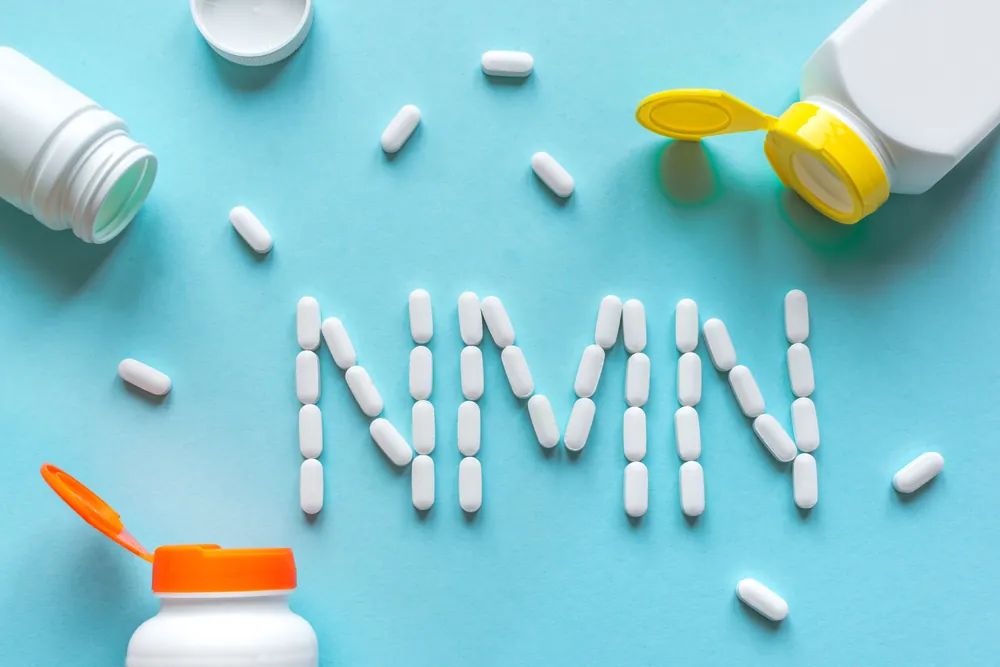A group of researchers has demonstrated that treatment with NMN, a precursor of NAD+, restores neurovascular coupling (NVC) in aged mice [1]. Since NVC deficiency seems to be a major factor in the age-related decline of cognitive and motor functions, this discovery presents exciting new possibilities for longevity research.
Neurovascular coupling
While the human brain is the evolutionary advantage that brought us to where we are today, operating this machine requires considerable resources. Our cerebral blood flow (CBF) accounts for 15% of cardiac output and 20% of resting total oxygen consumption, even though the brain itself comprises just 2% of body mass. CBF has to be constantly redirected to the regions of the brain that are currently active, and NVC is the mechanism in charge of this complex operation. Importantly, the CBF/cardiac output ratio decreases with age [2].
NVC works mostly by vasodilation – i.e. by widening blood vessels in regions where augmentation of blood flow is required [3]. The cellular mechanism behind this involves production of nitric oxide (NO) by the endothelial cells that line blood vessels in the brain. This is just the first step in an intricate multi-stage process that eventually leads to cerebral vasodilation and allows the brain to perform at its best.
There is growing evidence that NVC function declines with age [4] and that this decline plays an important role in the development of cognitive impairment and dementia in old people. Some motor functions, such as gait performance, are affected as well.
Why is NMN needed?
NAD+ is important for numerous cellular processes, but it is known best for its role in the electron transport chain, the main intracellular energy-producing process that takes place in mitochondria. The decline of NAD+ levels with age corresponds to impaired mitochondrial function. Their replenishment through NMN intake has been shown to reverse age-related dysfunction in multiple organs and to improve healthspan in mice.
Mitochondrial degeneration leads to increased mitochondrial oxidative stress, which, in turn, contributes to cardiovascular dysfunction [5] and age-related neurovascular impairment [6]. Hypothesizing that the decline in NVC function can also be attributed to mitochondrial degeneration, the researchers set out to determine whether this effect can be reversed by NMN supplementation.
NMN increases NO production via mitochondrial restoration
During the experiment, aged mice were treated with NMN for two weeks and then evaluated for cognitive and motor functions that are known to be affected by NVC response.
First, CBF responses were measured following whisker stimulation that is known to trigger a cascade of brain activity in mice. Initial CBF responses were much fainter in aged mice, indicating age-related NVC impairment. NMN treatment significantly increased CBF responses to whisker stimulation in aged mice to the levels observed in young mice. MRI analysis showed the same picture: CBF was weaker in aged mice compared to young ones, but NMN treatment increased it significantly.
To establish that these effects were primarily due to increased NO production, the researchers administered the NO synthase inhibitor L-NAME to the same three groups of mice (young, untreated aged, and treated aged). As a result, NVC responses were greatly decreased in young mice but not in the old, untreated ones, indicating that the latter group produced much less NO. Aged mice treated with NMN demonstrated restored L-NAME response.
Experiments in vitro showed that NMN treatment attenuates age-related mitochondrial oxidative stress in cerebromicrovascular endothelial cells (CMVECs). To determine whether this mechanism influences NO production, the scientists also performed a series of tests using mtROS (mitochondrial reactive oxygen species) inhibitors/scavengers that are structurally different from NMN: SS-31 peptide, resveratrol, and MitoTEMPO. These compounds elicited an increased NO response as well, which led the researchers to conclude that the restoration of mitochondrial function through NMN was indeed the underlying cause for the increased NO production. The authors also tried to determine the role of sirtuins that are known to be activated by NAD+. Knocking out SIRT1/SIRT2 genes in CMVECs prevented the beneficial effects of NMN, lending weight to the hypothesis that sirtuins are an important intermediary of this pathway.
Several cognitive and motor skills tests demonstrated substantial improvement following NMN treatment, such as the water maze test, in which mice are required to find a floating platform to get out of the water as fast as possible. This test evaluates working memory that is involved in immediate conscious perception and thus requires surges of CBF. Aged mice with NMN supplementation showed restoration of working memory to levels observed in young mice. Gait performance was yet another aspect in which significant improvement was achieved. Gait alterations have been linked to neurovascular dysfunction both in older humans and in animal models of aging. Age-related gait issues are a leading cause of falls and walking impairment in older people.
Conclusion
NMN supplementation has been consistently showing promising results in many areas of longevity research. The current study is the first to demonstrate that this method can be used to restore NVC and to attenuate cognitive and motor problems associated with its age-related decline. As NVC is also compromised in patients with Alzheimer’s disease, the authors suggest that their findings can contribute to the ongoing fight against this disease. Since mitochondrial dysfunction is one of the hallmarks of aging, further research of the apparent beneficial effects of NMN supplementation on mitochondrial metabolism is imperative.
Literature
[1] Tarantini, S., Valcarcel-Ares, M. N., Toth, P., Yabluchanskiy, A., Kiss, T., Ballabh, P., … & Ungvari, Z. (2020). Nicotinamide mononucleotide (NMN) supplementation rescues cerebromicrovascular endothelial function and neurovascular coupling responses and improves cognitive function in aged mice. The FASEB Journal, 34(S1), 1-1.
[2] Xing, C. Y., Tarumi, T., Liu, J., Zhang, Y., Turner, M., Riley, J., … & Zhang, R. (2017). Distribution of cardiac output to the brain across the adult lifespan. Journal of Cerebral Blood Flow & Metabolism, 37(8), 2848-2856.
[3] Girouard, H., & Iadecola, C. (2006). Neurovascular coupling in the normal brain and in hypertension, stroke, and Alzheimer disease. Journal of applied physiology, 100(1), 328-335.
[4] Lipecz, A., Csipo, T., Tarantini, S., Hand, R. A., Ngo, B. T. N., Conley, S., … & Csiszar, A. (2019). Age-related impairment of neurovascular coupling responses: a dynamic vessel analysis (DVA)-based approach to measure decreased flicker light stimulus-induced retinal arteriolar dilation in healthy older adults. Geroscience, 41(3), 341-349.
[5] Rosca, M. G., & Hoppel, C. L. (2010). Mitochondria in heart failure. Cardiovascular research, 88(1), 40-50.
[6] Petrozzi, L., Ricci, G., Giglioli, N. J., Siciliano, G., & Mancuso, M. (2007). Mitochondria and neurodegeneration. Bioscience reports, 27(1-3), 87-104.





